
Vietnam: Holidays that Shape Culture and Traditions.
Vietnam, a country with a rich history and fascinating traditions, is a true gem of Southeast Asia. Every corner of this land hides unique rituals and customs that are part of daily life and carry deep cultural and spiritual meaning. Vietnamese holidays are not just times for rest or celebration—they are moments when people return to their roots, honor their ancestors, and strengthen family and social bonds.
Reflections of History in Every Holiday
Vietnamese holidays are not only an opportunity to rest but also a chance to reflect on the meaning of history and cultural heritage. Each holiday carries deep significance and reflects an important moment from the past, such as the end of a war, honoring the nation’s founders, or praying for a bountiful harvest.
Social Bonds and Family Tradition
Whether it’s Tết, the Hùng Kings‘ Festival, or National Independence Day, each holiday is also a chance for families to gather, exchange gifts, share traditional meals, and strengthen their relationships. This article provides an overview of the most important holidays in Vietnam, their origins, ways of celebration, and cultural significance.
BOOK A TOUR / ACTIVITY in Vietnam ➜
10 Important Holidays in Vietnam:
1. Tết Nguyên Đán – Vietnamese Lunar New Year
When: End of January or beginning of February (according to the lunar calendar)
Tết is undoubtedly the most important Vietnamese holiday, marking the arrival of the new lunar year. It corresponds to the Chinese New Year but has its own unique traditions and characteristics.
History and Significance: Tết means “feast of the first morning” and is a time of renewal, new beginnings, spiritual cleansing, and honoring ancestors. People believe that what happens during the first days of the new year will influence the entire year ahead.
Traditions: Cleaning the house before Tết begins – to remove past misfortunes.
Buying new clothes, decorating homes with flowers such as peach blossoms in the north and apricot blossoms in the south.
Ancestor worship – visiting graves and home altars.
Traditional Dishes: *Bánh chưng* (square sticky rice cake) in the north and *bánh tét* (cylindrical sticky rice cake) in the south.
“Lì xì” – giving red envelopes with money to children as a symbol of good luck.
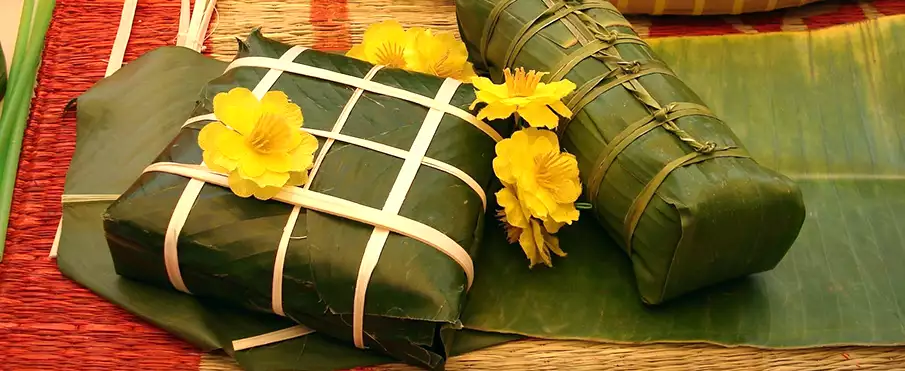
2. Festival of the First Day of Spring (Lễ hội khai hạ)
When: 6th day of the lunar year
Where: Throughout Vietnam
The khai hạ festival, which follows Tết Nguyên Đán, symbolizes the beginning of a new working period. It is the day when Vietnamese people resume their daily activities and pray for success, health, and happiness in the coming year. This celebration is associated with rituals meant to bring prosperity, such as prayers at temples, burning incense, and offering gifts.
People believe that a good start to the new period will bring luck and success, so business owners often reopen their shops to welcome the new year with positive energy. Lễ hội khai hạ is not just about personal fortune, but also about social support and reinforcing traditional patterns and values within the community.
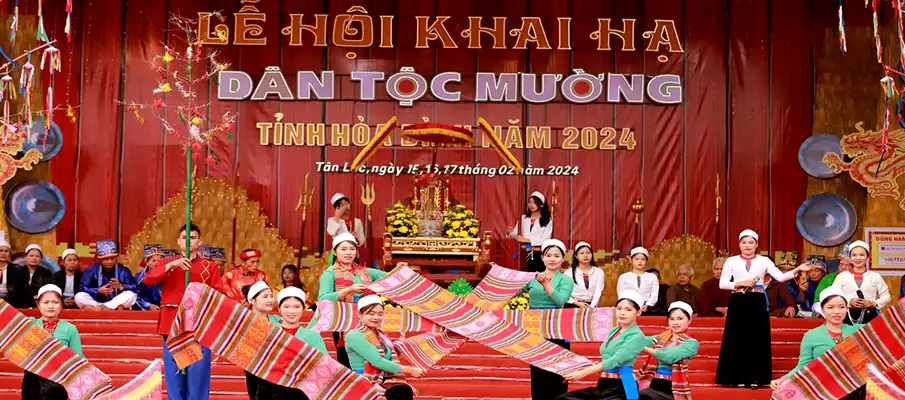
3. Hung Kings Festival (Giỗ Tổ Hùng Vương)
When: 10th day of the third lunar month
Where: Mainly in Phú Thọ and other parts of Vietnam
The Hung Kings Festival, or Giỗ Tổ Hùng Vương, is a major national holiday commemorating the founders of the Vietnamese nation – the 18 kings of the Hùng dynasty who ruled ancient Vietnam (then called Văn Lang). According to legend, these kings were the first rulers who united Vietnamese tribes and laid the foundation of the nation.
Significance of the festival: This holiday carries deep historical and cultural meaning, as it honors not only the kings themselves but also the legacy they left behind, which remains at the core of Vietnamese culture. It is a day of national pride when Vietnamese people pay respect to these ancient leaders and remember the origins of their nation.
Celebrations: The grandest celebrations are held at the Hùng Temple in Phú Thọ, regarded as the sacred place where the Hung Kings are believed to rest. People travel from all over the country to participate in ceremonies, burn incense, and make offerings at the kings’ altar.
During the holiday, ceremonial parades take place with participants dressed in traditional attire, carrying symbols of national pride such as flags or ritual objects. The festivities also include traditional games and contests designed to evoke the military strength and perseverance of the kings who defended their homeland. Giỗ Tổ Hùng Vương is not only a tribute to the past but also a day when Vietnamese people renew their national identity and pride in what their ancestors achieved. This festival unites generations and strengthens their bond with historical roots.
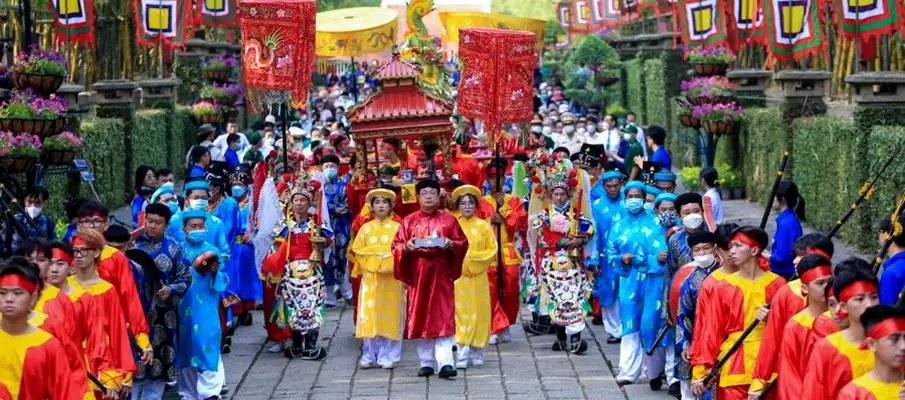
4. Reunification Day (Ngày Giải Phóng Miền Nam)
When: April 30
Where: Throughout Vietnam, especially in Ho Chi Minh City (formerly Saigon)
Reunification Day commemorates the fall of Saigon on April 30, 1975, which marked the end of the Vietnam War and the unification of North and South Vietnam under the communist regime. This day is a symbol of victory, national unity, and recognition of the sacrifices made during the war.
Significance of the holiday: It is a day when Vietnamese people celebrate the end of the country’s division and triumph over difficult times. It is also a time to remember war heroes and reflect on the tragic losses. This holiday holds strong historical and political importance for all generations of Vietnamese.
Celebrations: Celebrations take place across the country, with the largest events held in Ho Chi Minh City. The program includes military parades, cultural events, concerts, and visits to historical monuments. People burn incense and lay flowers at war-related sites. Reunification Day is not only a day of victory but also a time to renew national pride and unity that connects Vietnamese people across generations.

5. International Workers’ Day (Ngày Quốc tế Lao động)
When: May 1
Where: Throughout Vietnam
International Workers’ Day is a globally celebrated holiday that recognizes the contributions of workers and the working class to the development of society. In Vietnam, this is an important holiday that expresses respect for working people and their role in building the national economy.
Significance of the holiday: May 1 is a day when Vietnamese people reflect on the value of labor, solidarity, and workers‘ rights. The holiday holds both historical and political significance as it embodies the values of socialism and equality that are part of Vietnam’s ideology. It is a celebration of all who contribute to the country’s progress, from laborers to professionals.
Celebrations: In Vietnam, May 1 is an official public holiday with various public events, parades, and demonstrations. People take part in celebrations that include cultural performances, sports events, and political speeches. In some regions, special ceremonies are held to highlight the importance of labor in national development and stability. This day offers an opportunity to express solidarity among workers and celebrate their everyday efforts. International Workers’ Day is not only a day of rest but also a time to strengthen social cohesion and pride in collective achievements.

6. National Independence Day (Quốc Khánh)
When: September 2
Where: Throughout Vietnam
National Independence Day is one of the most important public holidays in Vietnam. It commemorates the declaration of independence of the Democratic Republic of Vietnam on September 2, 1945. On this day, President Hồ Chí Minh proclaimed Vietnam’s independence at Ba Đình Square in Hanoi, marking a key milestone in the country’s history.
Significance of the holiday: Quốc Khánh is a day when Vietnamese people celebrate their freedom and national pride. It symbolizes the end of French colonial rule and the birth of an independent Vietnamese republic. The day carries both historical and political importance, as it honors the ideals of freedom, equality, and independence that were the foundation of Vietnam’s struggle for liberation.
Celebrations: National Independence Day is marked by grand military parades, official ceremonies, and public festivities. In Hanoi, where Hồ Chí Minh declared independence, formal events take place attended by government leaders and thousands of citizens. In addition, cultural performances, concerts, and fireworks are held across the country, expressing joy and gratitude for the hard-won freedom. This holiday is not only a day to remember a historic moment but also a time when the Vietnamese people reaffirm their national identity and pride in the independence they secured after years of colonization.
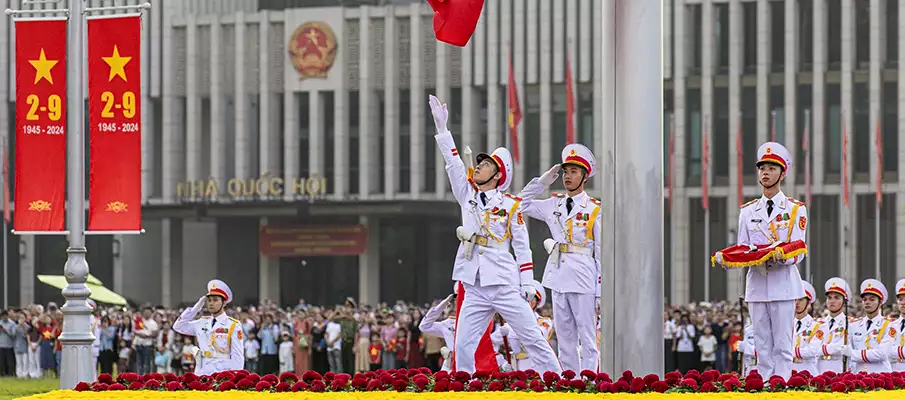
7. Mid-Autumn Festival (Tết Trung Thu)
When: 15th day of the 8th lunar month (September or October)
Where: Throughout Vietnam
The Mid-Autumn Festival, also known as Tết Trung Thu, is a traditional Vietnamese holiday today commonly referred to as the „Children’s Festival.“ Originally, it had agricultural roots and was a time to celebrate a good harvest, but today it is mainly a day to honor children and their happiness.
Significance of the holiday: This festival is seen as a day dedicated to children, celebrating their joy and innocence. It is also an opportunity for families to gather, share happiness, and strengthen family bonds. While the festival has agricultural origins, today it mainly focuses on children, who take part in various fun activities.
Traditions: During Tết Trung Thu, children carry beautifully decorated lanterns, join in parades, and dance. The lanterns come in various shapes, from traditional stars to animal designs, and symbolize light, happiness, and hope. Lion and dragon dance performances are also part of the festivities, bringing good luck and warding off evil spirits.
An inseparable part of the celebration is the traditional baking of mooncakes (bánh trung thu), which are sweet treats filled with various ingredients such as lotus seeds, egg yolks, beans, or fruit. These cakes are symbolic foods for the festival and are often given as gifts among families. Tết Trung Thu is thus a joyful and colorful holiday that not only honors children but also strengthens cultural traditions and family values in Vietnam.
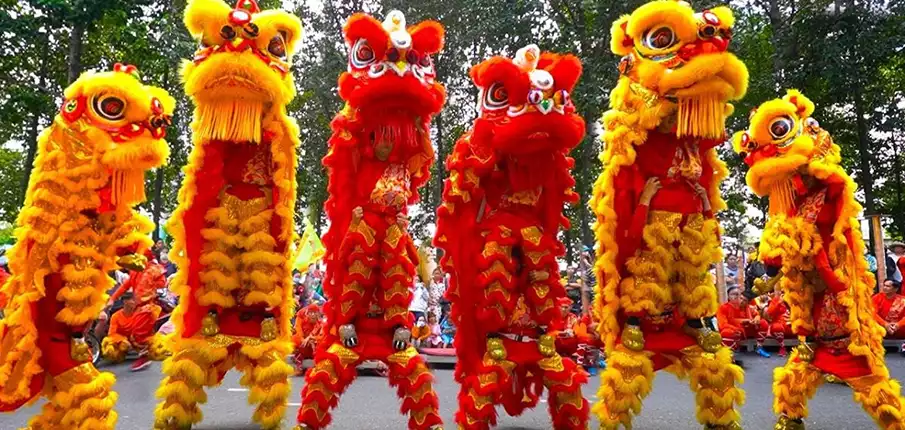
8. Teachers’ Day (Ngày Nhà Giáo Việt Nam)
When: November 20
Where: Throughout Vietnam
Teachers’ Day is an important holiday that celebrates the role of educators in Vietnamese society. It is a time to express respect and gratitude to teachers who shape the future of younger generations and contribute to the development of education and culture in the country.
Significance of the holiday: Teachers’ Day on November 20 holds deep cultural and historical importance. In traditional Vietnamese society, education has always been regarded as a key to personal growth and national success. Teachers are seen as moral authorities who not only impart knowledge but also shape students’ character and help them become responsible members of society. This day is therefore both a tribute to educators and a reminder of the value of education for national development and stability.
Celebrations: On November 20, various events and activities are held in schools across the country to honor teachers. Pupils and students bring flowers, give gifts, and prepare cultural performances such as songs, dances, and plays. Many schools also hold formal ceremonies where outstanding teachers are recognized for their long-term dedication. This day serves as an opportunity for Vietnamese society to deepen respect for the teaching profession and to strengthen the bond between students and educators.
9. All Souls’ Day – Lễ Vu Lan
When: 15th day of the 7th lunar month
Where: Throughout Vietnam
Lễ Vu Lan, also known as Vietnamese All Souls’ Day, is an important Buddhist holiday focused on remembering deceased ancestors and parents. This day is a time when Vietnamese people show respect to those who have passed away, while also reflecting on how they can repay the love and sacrifices of their parents and forebears.
Significance of the holiday: Lễ Vu Lan carries deep spiritual and cultural significance as it is regarded as a time to honor one’s ancestors and departed parents. The holiday has roots in Buddhism and is associated with the belief that on this day, the souls of the deceased can receive support and prayers from their living descendants. According to Buddhist teachings, this day offers an opportunity for souls residing in other realms to find peace through the offerings and prayers made by their families. In this context, Lễ Vu Lan is not only a day of remembrance, but also a day of forgiveness and spiritual cleansing for souls in need of peace.
Celebrations: Celebrations of Lễ Vu Lan involve religious and cultural rituals, primarily held at Buddhist pagodas. People gather to pray for the peace of their ancestors’ and parents’ souls. These rituals typically include offerings of food, flowers, and incense, which symbolize respect and gratitude. In some areas, processions are also held where people carry offerings and pray for the souls of their departed loved ones.
10. Traditional Regional and Local Festivals
When: Various dates throughout the year
Where: Various places across Vietnam
Vietnam has a range of regional and local festivals that celebrate local history, culture, and religion. These festivities are not only religious but also cultural and historical in nature, and they help strengthen community bonds and identity.
Examples of traditional festivals:
- Lễ hội Chùa Hương (Perfume Pagoda Pilgrimage Festival)
When: January to March
Where: Perfume Pagoda, near Hanoi
This major Buddhist festival includes prayers, boat rides, and visits to the sacred pagoda where pilgrims pray for health and happiness. - Lễ hội Đền Trần (Trần Temple Festival)
When: March
Where: Trần Temple, Nam Định
This festival honors members of the Trần Dynasty with ceremonies, dances, and folk games, reinforcing national pride. - Water festivals and harvest celebrations
When: Throughout the year, usually after the harvest
Where: Mekong Delta and countryside
These regions celebrate the harvest with offerings, dances, and traditional boat races as an expression of gratitude for natural resources. - Lễ hội Tết Trung Thu (Mid-Autumn Festival)
When: 15th day of the 8th lunar month
Where: Throughout Vietnam
This festival, during which children receive gifts and make lanterns, is a celebration of the harvest and an expression of gratitude to parents. - Lễ hội Cầu Ngư (Praying for Fish Festival)
When: May or June
Where: Coastal areas
This seaside festival focuses on prayers for safe fishing and an abundant fish harvest.
Conclusion: Vietnam’s regional festivals not only preserve local traditions but also strengthen cultural identity and community ties, whether through religious ceremonies, historical commemorations, or natural cycles.
❓ Questions + Answers about Holidays in Vietnam:
1. What is the secret to preparing bánh chưng, which is made only during Tết?
Bánh chưng, a square sticky rice cake, has a special recipe passed down through generations. It is traditionally prepared by large family groups and cooked for hours, symbolizing unity and patience.
2. Why is Tết considered the most important holiday when Vietnamese people celebrate New Year twice?
Vietnamese people celebrate both the Gregorian New Year and Tết, which follows the lunar calendar. However, Tết is deeply tied to traditions, family values, and ancestor worship.
3. What is „lucky money“ and why is the red envelope so symbolic?
„Lì xì“ or „lucky money“ is a red envelope with money given to children during Tết. The red color symbolizes good fortune and prosperity, and the envelopes are given with wishes for health and success in the new year.
4. What unusual rituals are performed during the Hùng Kings‘ Festival?
The Hùng Kings‘ Festival includes traditional ceremonies and temple visits, but in many places, rituals such as throwing offerings on altars are also performed to secure good luck and a prosperous harvest for the coming year.
5. What is the difference between bánh chưng and bánh tét, and why are they shaped differently?
Bánh chưng is square, symbolizing the earth, while bánh tét is cylindrical, representing the sky. This difference reflects the Vietnamese worldview — the harmony between heaven and earth.
6. Why is it forbidden to wash hair or clean the house during Tết?
Vietnamese tradition holds that washing hair or cleaning in the first days of the new year can „wash away“ luck and wealth. People observe rituals during Tết to attract only the best into their lives.
7. What is the origin of Tết Trung Thu and why is this festival so popular with children?
Tết Trung Thu is known as the „children’s festival“ and originates from celebrations of the harvest and gratitude for a good crop. Children receive gifts, join parades, and dance with lanterns shaped like animals and characters.
8. What does the color red symbolize during Vietnamese holidays?
Red symbolizes happiness, prosperity, and protection against evil spirits. During Tết, it is the dominant color used in decorations, envelopes, and even clothing to attract positive energy.
9. How is Teachers‘ Day celebrated and why is it so highly respected in Vietnam?
Teachers‘ Day is considered one of the most important holidays in Vietnam because teachers hold high status in local culture. Students give them flowers, express good wishes, and organize cultural performances in their honor.
10. Why do Vietnamese people spend hours preparing food during Tết and what is considered the „best“ dish of the season?
Preparing food during Tết is a process that unites families and friends. In addition to bánh chưng and bánh tét, pickled onions and boiled chicken are very popular and considered symbols of wealth and hospitality.



